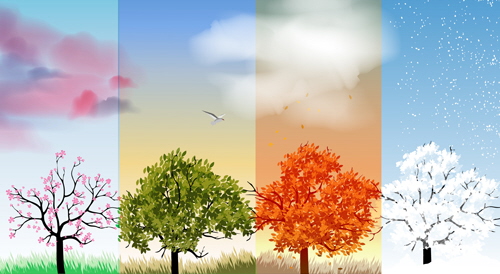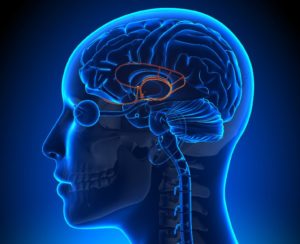The Principle of Rhythm
‘Everything flows, out and in; everything has its tides; all things rise and fall; the pendulum-swing manifests in everything; the measure of the swing to the right is the measure of the swing to the left; rhythm compensates’
The Kybalion states that in everything that is manifested there is a measured motion. A pendulum motion of back and forth. It links to the Principle of Polarity as this back-and-forth motion takes place between the two dualistic poles.
There is always an action and a reaction; an advance and a retreat; a rising and a sinking. We don’t have to go too far into nature to see this daily. If we go to the oceans, we can see the rise and fall of a tide which is manifested by the changing rhythms of the moon. Sunset always turns into Sunrise bring a new day, whilst our planet itself moves through its own circular rhythm of the Sun. For those of us in certain areas of the Hemisphere, we experience the Rhythms of the Seasons as they move through the year. Each season having a significant effect on the surrounding nature.
We ourselves our also part of this Principle with our breath using the oxygen given to us and breathing out the carbon dioxide that also nurtures life. We are also part of the Circadian Rhythm, the 'daily cycle' in the biochemical, physiological, or behavioural processes of all living beings.
Finally, the one that we so easily forget as humans, is that our emotions and internal state are also subjected to rhythms. A prominent example of this is when we look at the seasons. Our busy lives make us forget the fact that we are incredibly connected to nature, and both nature and ourselves impact each other. An obvious example if the change of seasons and weather. When we look at outside in winter and see its change of rhythm move from Autumn to Winter, we see the impact it has on the trees. We see tree’s branches bare when they were so full of life mere months before. If we really look, we might notice the rhythm of how certain animals change in the Winter in feeding and sleeping habits. However, what we often fail to be aware is how as nature moves into Winter our emotional rhythms are also affected.

The change of Seasons is one of natures own rhythms and affects us, aware or not
For some it is obvious, and we even have a name for it now (SAD- Seasonal Affective Disorder), as we feel lower within ourselves and life feels like it suddenly has become much harder. For others, it may be more subtle. We might find our diet changes as we feel hungrier, we need more sleep or that we do not feel ready to make an important decision and we need more time to contemplate it instead. Then as Spring comes in and we look outside the window and see the Sun moving higher, the days brighter and new life forming all around us, so often does our inner world change. Some of us feel fresher, more creative, with more urgency to start or continue that project. Some of us might even feel things to a different degree, but one thing will be sure is even if we don’t notice it, is there will be some change within us.
However, whilst we also have seasonal changes in our emotional rhythm, so too we are affected by the Rhythm of the planets of around us. This is of course how astrology comes into play, and how the astrological forces of the movement of planets in our solar system impact on our chart. For those that are sceptical should investigate the history of how the rhythm of the moon, as it has reached its fullness (full moon) has impacted us over the years. The word ‘Lunatic’ derived from the Latin word ‘lunar’ (moon) was used in the 1300’s as many believed back then the phases of the moon caused insanity. What is fascinating, is that recent studies have shown there is a correlation between violent incidents and the full moon, with a small peak of incidences of general crime.
On a lesser scale but maybe a more noticeable one is how the rhythm of the day affects us and our internal state. I am sure you know people that are what we call ‘morning people’, being full of energy when they wake up and often going to bed early. Then we have the opposite end of the spectrum with what we call ‘night babies’, those that feel more comfortable at night, staying up later, but being more irritable and finding the mornings harder.
This often goes hand in hand with our emotions too. For example, I have discovered over the years that I am often anxious in the mornings for at least 20-30 minutes. I am not anxious about anything, but the sensation still resides, whilst in the evening I am much more relaxed and even if something goes wrong, I will less likely be too stressed about it. That is my personal daily rhythm that once I was aware of and accepted made those mornings a lot easier to manage.
Indeed, modern science has discovered that for many we are born to be more anxious than others and are what is called ‘biological vulnerable’ meaning a negative environment in childhood might cause more harm in adulthood when compared with someone else with a different brain chemistry. It also means that some of our emotions such as anxiety and fear are genetic and thus, we are unlikely to be able to get rid of it. However, this knowledge can move us into acceptance of it instead, thus severely reducing its impact whilst helping us accept ourselves and increasing our self-worth.

Those who are born with more biological vulnerability, can be more susceptible to a damage to their Limbic System (part of the brain that regulates our emotional systems) in childhood.
Hopefully, after reading this, you become more aware of your own personal rhythms. Be it in the day, the seasons, or the year. With increased awareness it allows us to navigate them more honestly and ultimately move us closer to who we really are.


